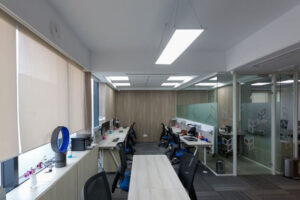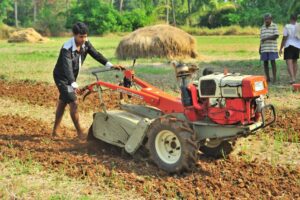Due to the high demand for cheap construction materials, the brick-making industry in Bangladesh has thrived. However, brickfields that use centuries-old technologies heavily concentrated in the peripheries of larger cities and towns expel dust, ash, black smoke, and other pollutants into the atmosphere, impacting air quality and potentially contributing to global climate change.
Data Analysis
Using remotely sensed Landsat imagery, this study identifies brickfield locations and areal expansion between 1990 and 2015 in Dhaka. The employs spatial statistics methods including quadrat analysis and Ripley’s K-function to analyze the spatial variation of brickfield locations. Finally, using nearest neighbor distance as density functions, the distance between brickfield locations and six major geographical features (i.e., urban, rural settlement, wetland, river, highway, and local road) were estimated to investigate the threat posed by the presence of such polluting brickfields nearby urban, infrastructures and other natural areas. Results show significant expansion of brickfields both in number and clusters between 1990 and 2015 with brickfields increasing in number from 247 to 917 (total growth rate 271%) across the Dhaka urban center.
The results also reveal that brickfield locations are spatially clustered: 78% of brickfields are located on major riverbanks and 40% of the total are located in ecologically sensitive wetlands surrounding Dhaka. Additionally, the average distance from the brick manufacturing plant to the nearest urban area decreased from 1500 m to 500 m over the study period. This research highlights the increasing threats to the environment, human health, and the sustainability of the megacity Dhaka from brickfield expansion in the immediate peripheral areas of its urban center.
The findings and methods presented in this study can facilitate data-driven decision-making by government officials and city planners to formulate strategies for improved brick production technologies and decreased environmental impacts for this urban region in Bangladesh.
Tracking Brickfield Locations
Typically rectangular in shape, with rounded corners occasionally, and attached with smokestacks 6 to 10 m in height on top. The brickfields in the study region are Bull’s trench or fixed-chimney varieties. Bricks make up the kiln’s bottom, side, and top walls; the top is left open. Figure 2 is a drawing of a typical Bull trench chimney. Bull’s Trench operations are low-tech, they are inexpensive to construct and frequently found in the lowlands of greater Dhaka’s peri-urban zones. They thus only function from November to May, which are the dry months [1,23].
Bricks that are soft and muddy are continuously burned into hard ones in the same yard and kilns. The Bull’s Trench kind of brick-burning technology predominates in the research region (as well as Bangladesh). Satellite images, whether they are high-resolution true color images or false color composite multispectral images, clearly show these brickfields and brickyards. Additionally, their real functioning area may be identified as well as their shape, structure, and other characteristics using high-resolution satellite images (Figure 3).
We used Landsat imagery from four different time periods (1990, 1995, 2005, and 2015) to digitize potential brickfield sites, utilizing Google Earth’s time-lapse and high-resolution imagery. As we lacked high-resolution imagery for 1990, we used it as a proxy to track brickfield clusters on Landsat images. Despite the limitations of using time-lapse imagery for detailed analysis, we were still able to map and trace each brickfield’s approximate location on the Landsat images by playing back and forth between the time-lapse and high-resolution images. We identified each brickfield site on the 2015 imagery and recorded their extent and centroids.
Brickfield locations in 2015 in greater Dhaka
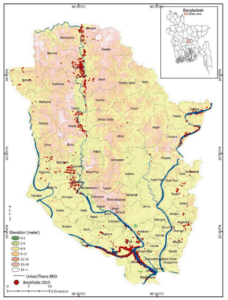
Figure 1. Elevation and brickfield locations in 2015 in greater Dhaka. An inset map in the top right corner shows the study area of greater Dhaka’s geographical position (red square box) in Bangladesh.
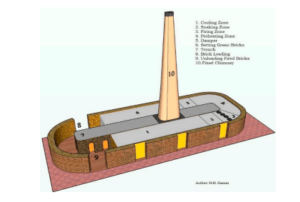
Figure 2. Schematic diagram of traditional fixed-chimney Bull trench clay-made brick burning kilns.
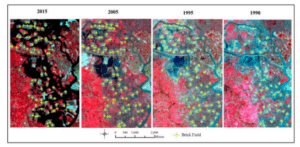
Figure 3. The shape and structure of traditional brickfields are visible in high-resolution Google Earth imagery (top) and digitized brickfield locations overlaid on false color composite Landsat imagery across the study period (bottom).
For more details, please Contact Us.
or, WhatsApp Us: +880 1713222363


